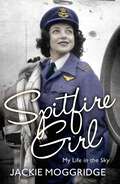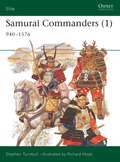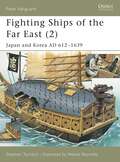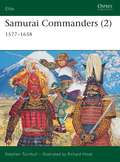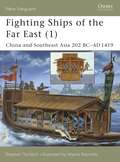- Table View
- List View
No Greater Love - Box Set: Three heartwarming romances from the bestselling author of An Ordinary Life (No Greater Love)
by Amanda ProwseFrom the bestselling author Amanda Prowse, NO GREATER LOVE features three interlinked novels about love, loss, courage and the search for happiness.This collection brings together Poppy Day, What Have I Done? and Clover's Child. They feature characters whose histories interweave through the generations: ordinary men and women who do extraordinary things for love. They are stories to keep you from switching off the bedside lamp at night, stories to remember long after the final page is turned...Poppy Day – when Poppy's childhood sweetheart, Mart, is taken hostage while on duty in Afghanistan, her world is torn apart. What price will she pay to save the man she loves?What Have I done? – Kathryn Booker seems to have the perfect life. But all is not as it seems behind closed doors, and Kathryn is about to do something to change it. Something only a truly desperate woman would do...Clover's Child – When Dot and Sol fall in love in 1960s London, family expectations and prejudice threaten to tear them apart. Will their love survive?Praise for Amanda Prowse:'Prowse handles her explosive subject with delicate skill... Deeply moving and inspiring' DAILY MAIL.'Powerful and emotional family drama that packs a real punch' HEAT.'A gut wrenching and absolutely brilliant read' IRISH SUN.'Captivating, heartbreaking, superbly written' CLOSER.
The Romanovs: The Terrible Fate Of Russia's Last Tsar And His Family (Great Lives)
by Robert K. MassieThe compelling quest to solve a great mystery of the twentieth century: the ultimate fate of Russia's last tsar and his family.In July 1991, nine skeletons were exhumed from a shallow grave near Ekaterinburg, Siberia, a few miles from the infamous cellar where the last tsar and his family had been murdered seventy-three years before. Were these the bones of the Romanovs? If so, why were the bones of the two younger Romanovs missing? Was Anna Anderson, celebrated in newspapers, books, and film, really Grand Duchess Anastasia?This book unearths the truth. Pulitzer Prize winner Robert K. Massie presents a colourful panorama of contemporary characters, illuminating the major scientific dispute between Russian experts and a team of Americans, whose findings – along with those of DNA scientists from Russia, America, and the UK – all contributed to solving one of history's most intriguing mysteries.
Spitfire Girl: My Life in the Sky
by Jackie MoggridgeThe inspiring memoir of the remarkable Jackie Moggridge: ATA girl, Spitfire expert and pioneer. 'We had returned to a different world. We had taken off in peace at nine-thirty and landed in war at noon.' Jackie Moggridge was just nineteen when World War Two broke out. Determined to do her bit, she joined the Air Transport Auxiliary. Ferrying aircraft from factory to frontline was dangerous work, but there was also fun, friendship and even love in the air. At last the world was opening up to women... or at least it seemed to be. From her first flight at fifteen to smuggling Spitfires into Burma, Jackie describes the trials and tribulations, successes and frustrations of her life in the sky. What Amazon readers are saying about Spitfire Girl: 'There is something for everyone in this remarkable autobiography, adventure, romance, flight, struggle, victory. Must read!' 5* 'An amazing book by an inspirational woman' 5* 'Drama, aircraft, relationships... it's all there in this great page-turner!' 5* 'I am left with real admiration for Jackie Moggridge, truly an amazing lady' 5* 'Brilliant book. What an amazing women she was' 5*.
Kriegsmarine Coastal Forces (New Vanguard #151)
by Gordon WilliamsonAlthough often overlooked in favour of the U-boats or battleships, the vast majority of the Kriegsmarine was formed of the smaller vessels of the coastal forces. These ships and boats, which included minesweepers, torpedo boats, patrol boats, and blockade breakers, gave crucial service to Germany during the war, and many continued serving for decades after the surrender in such tasks as clearing minefields. Also included in these forces was Hitler's yacht, the Ostwind. This book reveals the history of the vessels that formed the backbone of the Kriegsmarine, and combines fascinating anecdotes, detailed technical information, and full-colour artwork.
Kriegsmarine Auxiliary Cruisers (New Vanguard)
by Gordon WilliamsonDespite being relatively unknown compared to famous ships like Graf Spee or Bismarke, or the more famous U-boats, the Auxiliary Cruisers were immensely successful, not only in the number of enemy ships they sank, but in the resources which were tied up trying to track them down. The Royal Navy's auxiliary cruisers tended to be merchant vessels used to protect convoys from attack. The German Auxiliary Cruisers, however, heavily armed and usually carried torpedo tubes as well as guns and even sometimes their own aircraft. These ships were aggressive predators, searching the sea lanes for unsuspecting enemy merchants, and were not only capable of destroying enemy merchant ships, but also of defending themselves against well-armed enemy warships. This book looks at the specifications and designs of the 11 Auxiliary Cruisers, as well as their combat histories, their eventual fates, and the careers of some of the most famous commanders.
U-Boat Bases and Bunkers 1941–45 (Fortress)
by Ian Palmer Gordon WilliamsonFew of the massive military structures built by Germany during World War II are as impressive as the U-Boat bases and bunkers in Germany, Norway and France. This title takes a close look at the formidable edifices on the French coast (Brest, Lorient, St Nazaire, La Pallice, Bordeaux) in Norway (Bergen, Trondheim) and Germany (Keil, Hamburg, Helgoland) and also focuses on the huge 'Valentin' factory complex at Bremen, which manufactured the new type XXI electro-boats. Bunker protective systems, such as camouflage, light and heavy flak installations and nearby air cover, are also examined as well as resident flotillas and the fate of the bases at war's end.
The Fortress of Rhodes 1309–1522 (Fortress #96)
by Brian Delf Konstantin NossovFirst besieged in 305 BC, the island of Rhodes became part of the Roman Empire and was later fortified in the Byzantine style. Due to its strategic position in the Mediterranean, Rhodes was also attacked and besieged for over a century by Islamic forces. This title details the development of these fascinating fortifications, as well as the sieges that sought to reduce them.
Grey Wolf: U-Boat Crewman of World War II (Warrior #36)
by Darko Pavlovic Gordon WilliamsonThe scourge of Allied shipping during World War II, the U-Boot Waffe was one of the most feared components of Hitler's war machine, yet the Kriegsmarine was the least political branch of the Third Reich. The sailors of the U-boat arm were courageous, highly skilled seamen, who fought a war in the toughest conditions: subject to immense tension, and forced to cope with the challenges of the Atlantic, life for a U-boat recruit was far from easy. This title explores the life of a typical U-boat crewman, from recruitment, through training and service conditions, to combat experience throughout the war. Illustrated with many previously unpublished images, this book offers a fresh insight into the experiences of the men in Dönitz's legendary 'wolf packs'.
German Seaman 1939–45 (Warrior)
by John White Gordon WilliamsonWhen re-armament came after World War I, the German Navy was forced to build anew, so the Reichsmarine and its successor, the Kriegsmarine, found itself in possession of some of the most modern, powerful and technically advanced vessels in the world. Germany was very selective in picking her sailors and the quality of manpower skill levels was thus very high. This book charts the recruitment, training, service conditions and combat experiences of a typical World War II German sailor, focusing on the main branches of the Navy, as well as the last ditch combat units thrown into action as infantry in the final days of the war.
Osaka 1615: The last battle of the samurai (Campaign #170)
by Stephen Turnbull Richard HookIn 1614-15 Osaka Castle was Japan's greatest fortification, measuring approximately 2 miles in length with walls 100 feet high. It was guarded by 100,000 samurai, determined to defend the last of the once-powerful Toyotomi clan. The castle was seemingly impenetrable; however, Tokugawa Ieyasu, the founder of the ruling dynasty, was determined to destroy this remaining threat to the Tokuwaga ruling dynasty. This book explores the bitter struggle of the Summer and Winter campaigns, which eventually saw the last great clash of the samurai and defined the balance of power in Japan for years to come.
Samurai Commanders: 940–1576 (Elite #125)
by Stephen TurnbullThe samurai were the military elite of medieval and early modern Japan, and the men who led them were hailed as the very greatest, most heroic and most honourable of all samurai warriors. This first of two books examines the lives, equipment, battles and wider roles of the samurai commanders between 940 and 1576, the period from the emergence of the samurai to the triumph of Oda Nobunaga, who set Japan on the road to reunification. The styles of armour and weaponry of the samurai changed considerably during this time and this book visually recreates some of the most famous samurai commanders.
Fighting Ships of the Far East: Japan and Korea AD 612–1639 (New Vanguard #63)
by Stephen TurnbullOver the centuries, naval relations between Japan and Korea appear to have alternated between peaceful trade and outright hostility. However, this impression can be misleading, as much of what passed for mercantile activity was in fact conducted by Japanese pirate fleets, who pillaged the coasts of Korea and China in a long-lasting tradition that culminated in the greatest pirate raid of all: Hideyoshi's invasion of Korea in 1592. This was the conflict that involved Ming China and almost dragged in Siam. It also led to Korea developing East Asia's most famous warship: the legendary turtle ship, which is described for the first time in full technical detail in this book.
Japanese Fortified Temples and Monasteries AD 710–1602 (Fortress #34)
by Peter Dennis Stephen TurnbullFrom the 10th century onwards the great Japanese monastic foundations of Nara and Mount Hiei maintained large armies of warlike monks. The tempestuous political rivalries that developed between the different orders of monks and religiously inspired laymen ensured that their temples and monasteries had to be securely sited and robustly defended. This books recreates these enormous fortified monasteries and temples, tracing their development from the 10th century through to the Sengoku Jidai period and the rise of the power of the shogunate under Tokugawa Ieyasu.
Samurai Heraldry (Elite #82)
by Stephen Turnbull Angus McBrideThe dazzling spectacle presented by the armies of medieval Japan owed much to the highly developed family and personal heraldry of samurai society. From simple personal banners, this evolved over centuries of warfare into a complex system of flags worn or carried into battle, together with the striking 'great standards' of leading warlords. While not regulated in the Western sense, Japanese heraldry developed as a series of widely followed practices, while remaining flexible enough to embrace constant innovation. Scores of examples, in monochrome and full colour, illustrate this fascinating explanation of the subject by a respected expert on all aspects of samurai culture.
Samurai Commanders: 1577–1638 (Elite #128)
by Stephen Turnbull Richard HookThis second volume about Japan's samurai commanders covers the generals of the later years of the Age of the Warring States, a period when only the most able leaders survived. This was a time when the prowess of a commander was measured as much by his strategic and organizational abilities as by his individual fighting skills and he was expected to give as great a show of strength in the council chamber as on the battlefield. This book discusses the lives, battles and wider roles of talented commanders such as Oda Nobunaga and Toyotomi Hideyoshi great men who stood out prominently due to their elaborate suits of armour and helmets, their stunning personal heraldry and their great armies.
Hatamoto: Samurai Horse and Foot Guards 1540–1724 (Elite)
by Stephen Turnbull Richard HookEach great samurai warlord, or daimyo, had a division of troops known as the Hatamoto, 'those who stand under the flag'. The Hatamoto included the personal bodyguards, the senior generals, the standard bearers and colour-guard, the couriers, and the other samurai under the warlord's personal command. Apart from bodyguard and other duties in immediate attendance on the daimyo, both horse and foot guards often played crucial roles in battle. Their intervention could turn defeat into victory, and their collapse meant certain defeat. As favoured warriors under the warlord's eye, members of the bodyguards could hope for promotion, and a few even rose to be daimyo themselves. All the three great leaders of the 16 and 17th centuries – including Oda, Hideyoshi and Tokugawa – had their own elite corps. Such troops were naturally distinguished by dazzling apparel and heraldry, with banners both carried and attached to the back of the armour, all of which will be detailed in an array of colour artwork specially created for this publication.
Fighting Ships of the Far East: China and Southeast Asia 202 BC–AD 1419 (New Vanguard #61)
by Stephen Turnbull Wayne ReynoldsFighting Ships of the Far East (1) adds enormously to the hitherto small corpus of knowledge about a fascinating and little known subject. Using detailed descriptions, accurate cutaway plates and reliable historical examples, this book covers the history of Chinese ship design and naval warfare from the beginning of the Han dynasty to the first few years of the Ming dynasty. The epic battle of Lake Poyang in in 1363, won by the man who was to become the first Ming Emperor, is also detailed.
War in Japan 1467–1615 (Essential Histories #46)
by Stephen TurnbullIn 1467 the Onin War ushered in a period of unrivalled conflict and rivalry in Japan that came to be called the Age of Warring States or Sengoku Jidai. In this book Stephen Turnbull offers a masterly exposition of the Sengoku Jidai, detailing the factors that led to Japan's disintegration into warring states after more than a century of peace; the years of fighting that followed; and the period of gradual fusion when the daimyo (great names) strove to reunite Japan under a new Shogun. Peace returned to Japan with the end of the Osaka War in 1615, but only at the end of the most violent, turbulent and cruel period in Japanese history.
German Commanders of World War II: Army (Elite)
by Gordon Williamson Malcolm McGregorThis first of two studies examines the careers and illustrates the appearance and uniforms of 19 of the German Army's leading field commanders in World War II. Their service covers the whole arc of that army's wartime experience, from stunning success in 1939–41, through the hugely costly middle years on the Russian Front to the stubborn defensive fighting in both East and West in 1943–45. Also included are five more junior unit commanders chosen because their service typifies the achievements of combat leaders in regimental and battalion commands. The colour portraits are in the uniquely meticulous style of the respected World War II illustrator Malcolm McGregor.
Knight's Cross with Diamonds Recipients: 1941–45 (Elite #139)
by Ramiro Bujeiro Gordon WilliamsonOn 28 September 1941, Hitler instituted a new, supreme class of the Knight's Cross decoration for gallantry and leadership: the Oak-Leaves with Swords and Diamonds. This award would be presented to only 28 soldiers, sailors and airmen, out of the approximately 15 million who served in the German armed forces. This title describes and illustrates all 28 of those men from fighter aces and U-boat commanders, to the youngest generals in the Wehrmacht, and field marshals in command of army groups – and including one officer for whom Hitler had to invent a literally unique award that set him apart even among the 'Diamond-bearers'.
Wellington's Specialist Troops (Men-at-Arms)
by Bryan Fosten Philip HaythornthwaiteThe specialist troops of Wellington's army played a crucial role in the success of the British Army. Though often understaffed and ineptly managed, the artillery, engineers, transport and commissariat, and medical services contributed to Wellington's ultimate victory in 1815. The Royal Artillery and Corps of Royal Engineers comprised a small number of highly trained officers, while the commissariat was composed of untrained civilians outside military discipline, and the medical services suffered from a shortage of trained surgeons. This richly illustrated book examines the organization, uniforms and equipment of each of these specialist departments.
Napoleon's Specialist Troops (Men-at-Arms)
by Bryan Fosten Philip HaythornthwaiteThough less celebrated than the infantry and cavalry, Napoleon's 'specialist' troops – artillery, engineers and supporting services – were indispensable elements without which no army could have operated, and frequently assumed greater significance than the line regiments. Indeed, having suffered least from the emigration of Royalist officers, the artillery was the best element of the early Republican armies, the nucleus of the old Royal artillery serving with distinction in the early campaigns such as Valmy. The organisation and uniform of Napoleon's specialist troops are here examined by Philip Haythornwaite in a engaging volume complemented by a wealth of illustrations including eight full page colour plates by Bryan Fosten.
The Russian Army of the Napoleonic Wars: Infantry 1799–1814 (Men-at-Arms)
by Paul Hannon Philip HaythornthwaiteIn 1795 the Russian army was as vast as the territory from which it was drawn. The College of War calculated that the regular army amounted to 541,741 men, plus 46,601 enrolled cossacks, and at least a further 100,000 irregular cavalry which could be mobilised in time of war. Inspired by the icons paraded by their priests before battle, the Russian infantry were capable of astonishing feats and total, blind obedience to orders. Philip Haythornwaite examines the organisation and uniforms of the remarkable Russian infantry troops who fought in the Napoleonic Wars.
Napoleon's Guard Infantry (Men-at-Arms)
by Bryan Fosten Philip HaythornthwaiteThis title looks at Napoleon's Middle and Young Guard infantry. The seniority of Guard infantry was only established definitely in 1812 by the Guard's chief of personnel, Courtois. The title 'Young Guard' was assigned to the newly-raised regiments in 1809, but the term 'Middle Guard' came into use about 1811. From the beginning the newer guard regiments were committed to action first, the Old Guard, as Napoleon wrote, 'being so precious, one fears to expose them'; thus the Fusiliers-Chasseurs distinguished themselves at Hilsberg whilst the rest of the Guard was kept in reserve. In 1808 the Fusiliers went to Spain, serving at the Madrid rising, Medina and Guadalajara. Philip Haythornwaite examines these troops in a detailed text backed by numerous illustrations including eight full page colour plates by Bryan Fosten.
Afrikakorps 1941–43 (Elite)
by Ronald Volstad Gordon WilliamsonThe campaign in North Africa between September 1940 and May 1943 holds not only an enduring fascination for postwar generations; but also a perhaps unique degree of nostalgia for some surviving participants. The campaign was no less costly in terms of human lives and material than many others; but regret at the cost is accompanied by positive memories in the minds of many veterans. This is not to suggest that the dead have been forgotten; but an almost mystical bond nevertheless exists, even between former enemies, amongst veterans of the desert campaign. Gordon Williamson examines the history, organisation and uniforms of Rommel's Afrikakorps.


